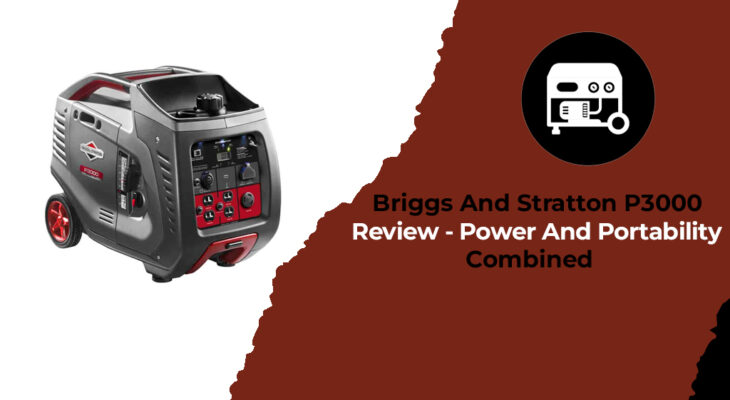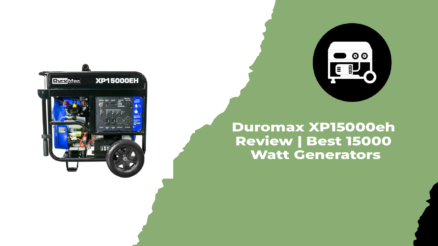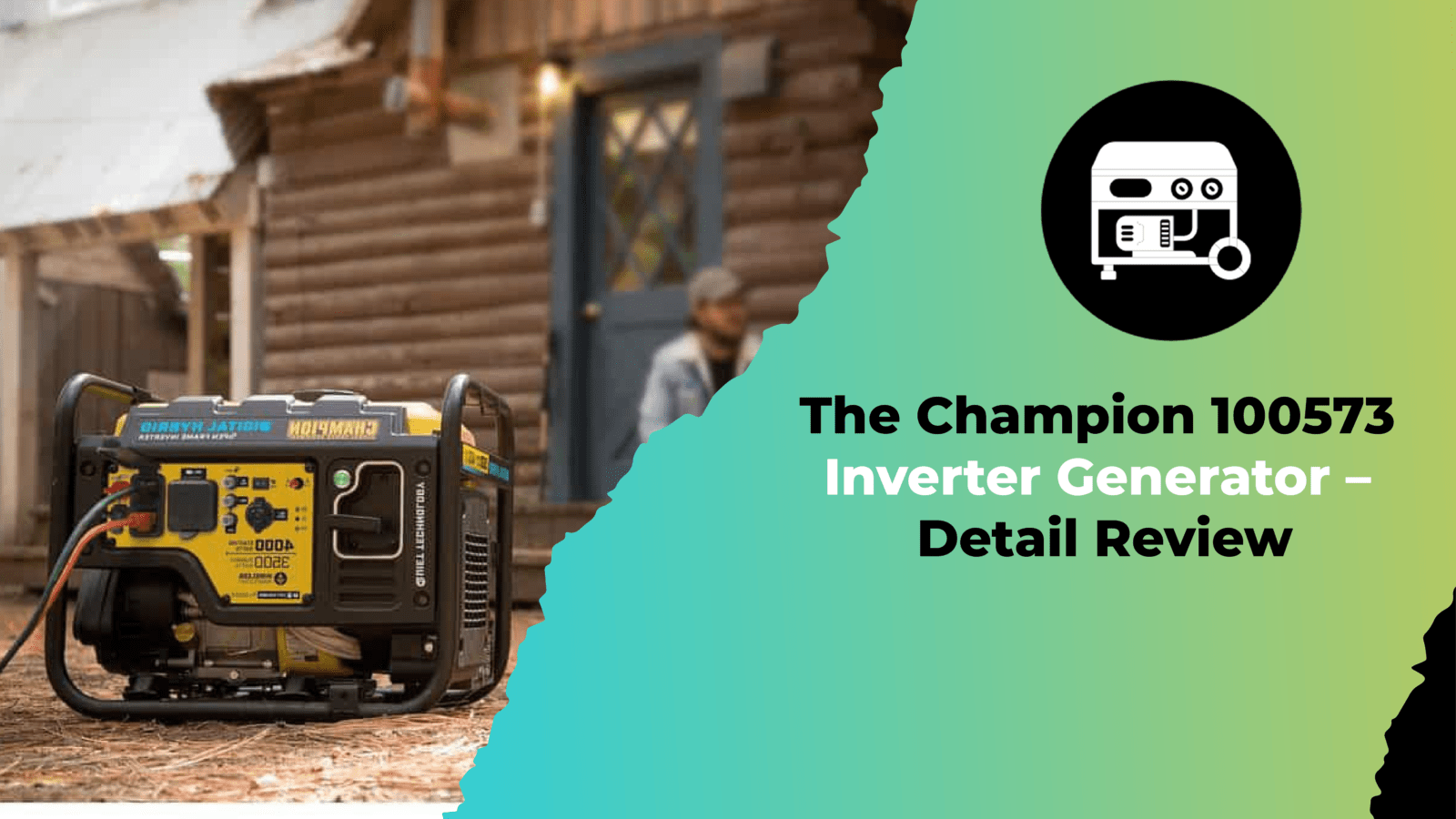In today’s world, having a reliable and portable power solution is crucial for various situations, from camping adventures to unexpected power outages. One generator that has gained popularity among consumers is the Briggs & Stratton P3000 Inverter Generator. With its exceptional features and the brand’s trusted reputation, this generator has become a go-to choice for many.
In this comprehensive review, we will delve into the key features, specifications, pros and cons of the Briggs & Stratton P3000 Inverter Generator. Additionally, we will compare it to other popular models on the market, such as the Briggs & Stratton 3000 Watt Generator and Power Smart Generator. We will also explore the quiet operation of the P3000, its advantages over Honda generators, and the availability of its service manual.
SPECIFICATIONS
The Briggs & Stratton P3000 Inverter Generator comes equipped with a range of specifications that enhance its overall performance and user experience. Here are some key specifications of the P3000:
| Brand | Briggs & Stratton |
| Engine Displacement | 171cc |
| Peak Power Output | 3,000 watts |
| Continuous Power Output | 2,600 watts |
| Fuel Tank Capacity | 1.5 gallons |
| Runtime at 25% Load | Up to 10 hours |
| Noise Level | 58 decibels at 25% load |
| Weight | 84 pounds |
To ensure proper operation and maintenance, Briggs & Stratton provides a detailed service manual for the P3000. This manual includes essential information on assembly, operating instructions, maintenance schedules, troubleshooting tips, and safety precautions. It is highly recommended to refer to the service manual for guidance on proper usage and maintenance procedures.
Briggs & Stratton P3000 Inverter Generator: Power and Efficiency
The Briggs & Stratton P3000 Inverter Generator is designed to provide reliable and efficient power for a variety of applications. Let’s explore its standout features:
- Power Output: With a peak power output of 3,000 watts and a continuous power output of 2,600 watts, the Briggs & Stratton P3000 Inverter Generator delivers sufficient power to run essential appliances and electronics simultaneously. Whether you’re camping, tailgating, or dealing with a power outage, the P3000 has you covered.
- Inverter Technology: The P3000 utilizes advanced inverter technology to produce stable and clean power. This technology generates a pure sine wave, making it safe for sensitive electronics like laptops, smartphones, and gaming consoles. You can connect your devices with confidence, knowing they are protected from potential damage.
- Fuel Efficiency and Runtime: Equipped with a 171cc OHV engine, the P3000 offers excellent fuel efficiency without compromising power output. Its 1.5-gallon fuel tank capacity allows for extended runtime, running up to 10 hours at 25% load. This ensures an uninterrupted power supply during extended camping trips or prolonged power outages.
- Quiet Operation: The P3000 is engineered with Quiet Power Technology, minimizing noise levels during operation. It operates as low as 58 decibels at 25% load, ensuring a peaceful environment for camping, outdoor events, or residential use. The quiet operation also makes it suitable for use in noise-sensitive areas.
Briggs & Stratton P3000 vs. Honda Generators: A Comparison
When comparing Briggs & Stratton generators to Honda generators, there are several factors to consider. Both brands are renowned for their quality and reliability, but there are some notable differences worth exploring:
- Power Output and Performance: Both Briggs & Stratton and Honda offer a range of generator models with varying power outputs. Honda generators are known for their excellent performance and often have higher power outputs compared to Briggs & Stratton models. Honda generators are popular for their robust power delivery, making them suitable for demanding applications.
- Fuel Efficiency: Honda generators are widely recognized for their exceptional fuel efficiency. They are designed with advanced engine technology that maximizes fuel usage, allowing for longer runtimes on a single tank. Briggs & Stratton generators also offer good fuel efficiency, but Honda is often considered a leader in this aspect.
- Noise Levels: Honda generators are known for their quiet operation, thanks to innovative noise reduction technologies. They employ advanced mufflers, insulation, and engine designs to minimize noise levels. While Briggs & Stratton generators also prioritize reduced noise, Honda generators tend to have a slight edge in this area. Read More Why are inverter generators so loud?
- Build Quality and Durability: Both Briggs & Stratton and Honda have a reputation for manufacturing high-quality generators built to last. Honda generators are often praised for their robust construction and durability, making them suitable for heavy-duty use. Briggs & Stratton generators also offer solid build quality but may vary depending on the specific model.
- Price: Honda generators are generally considered more expensive compared to Briggs & Stratton models. The higher price is often justified by Honda’s reputation for exceptional performance and reliability. Briggs & Stratton generators, while still offering reliable performance, tend to be more affordable, making them an attractive choice for budget-conscious consumers.
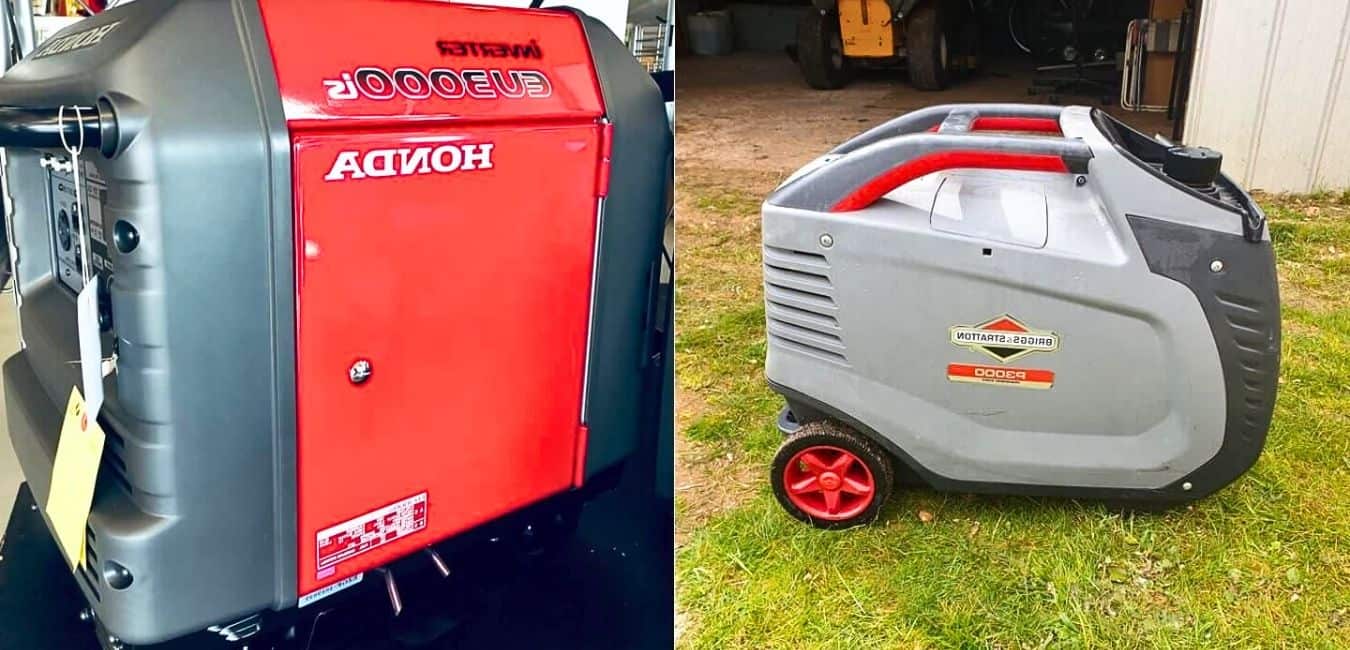
Ultimately, choosing between Briggs & Stratton and Honda generators depends on your specific needs, budget, and preferences. If you require maximum power output and fuel efficiency and are willing to invest in a premium product, Honda generators may be the preferred choice. However, if you are looking for a reliable generator at a more affordable price point, Briggs & Stratton generators offer a solid option with good performance and features. Consider your power requirements, desired features, and budget to make an informed decision that aligns with your needs.
Working Technique of Briggs & Stratton P3000
The Briggs & Stratton P3000 Inverter Generator is a portable power generator that utilizes advanced inverter technology to provide clean and stable power for various applications. Here’s an overview of its working:
- Engine: The generator is equipped with a high-quality Briggs & Stratton engine. It can be either a gasoline-powered or dual-fuel (gasoline and propane) engine, depending on the model.
- Fuel Supply: The generator has a fuel tank that holds gasoline or propane, depending on the model and fuel type selected. The engine draws fuel from the tank to generate power.
- Starting the Generator: To start the generator, you typically need to turn the fuel valve to the “On” position (if applicable), set the choke (if necessary), and pull the recoil starter handle or use the electric start button (if available).
- Inverter Technology: The P3000 utilizes advanced inverter technology. It converts the generator’s raw power from DC (Direct Current) to AC (Alternating Current) with very high precision. This process ensures a consistent and stable output voltage and frequency, making it suitable for powering sensitive electronic devices such as laptops, smartphones, and televisions.
- Power Output: The P3000 has a rated power output of 3000 watts, with a surge capacity of up to 3,000 watts for short periods. It provides both 120V AC outlets and a 12V DC outlet. The AC outlets can deliver a combination of 120V and 20-amp power, while the DC outlet is primarily used for charging automotive batteries or powering 12V devices.
- Control Panel: The generator features a control panel that allows you to monitor and control its operation. The control panel typically includes indicators for output power, overload, low oil level, and fuel level. It may also have switches for the electric start (if available), economy mode, and a circuit breaker to protect against overloading.
- Eco Mode: The P3000 usually offers an economy mode, which adjusts the engine speed according to the connected load. When the load is light, the generator will automatically lower its engine speed, resulting in quieter operation, reduced fuel consumption, and extended runtime.
- Parallel Capability: Some models of the P3000 offer parallel capability, which means you can connect two generators in parallel using a dedicated parallel kit. This feature allows you to combine the power output of two generators, effectively doubling your available power for larger loads.
- Safety Features: The generator incorporates various safety features to protect both the user and the equipment. These features may include low oil shutdown, which automatically turns off the engine when the oil level is too low, and overload protection to safeguard against excessive power draw.
- Portability: The P3000 is designed for portability, featuring a compact and lightweight design. It often comes with integrated handles and wheels, making it easy to transport and manoeuvre.
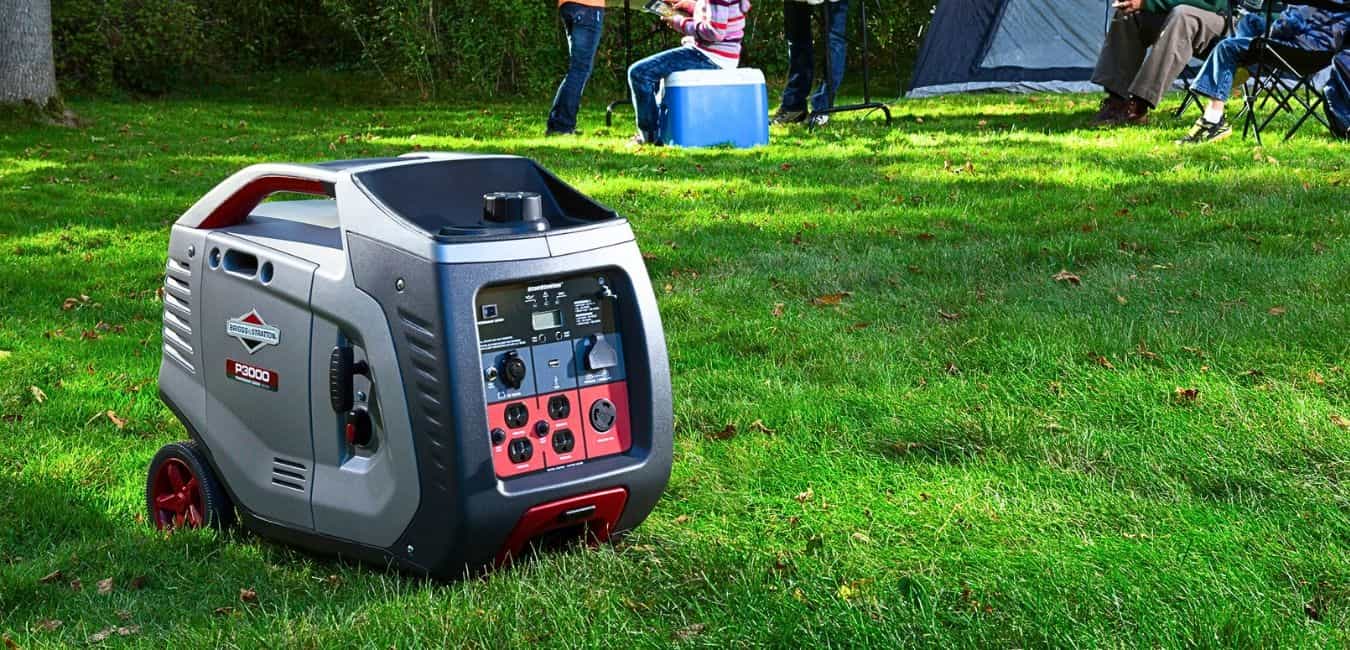
It’s important to consult the specific user manual for the Briggs & Stratton P3000 Inverter Generator model you have, as the exact features and operation may vary slightly. The manual will provide detailed instructions on starting, stopping, and maintaining the generator for optimal performance and longevity.
Pros and Cons of the Briggs & Stratton P3000 Inverter Generator
To provide a comprehensive review, let’s examine the pros and cons of the Briggs & Stratton P3000 Inverter Generator:
Pros
- Powerful Performance: The P3000 offers a peak power output of 3,000 watts, providing ample power for various applications.
- Clean and Stable Power: With advanced inverter technology, the P3000 generates a pure sine wave, making it safe for sensitive electronics.
- Fuel Efficiency: The P3000’s efficient engine design allows for extended runtime, ensuring continuous power supply without frequent refuelling.
- Quiet Operation: Quiet Power Technology minimizes noise levels, allowing for comfortable use in various settings.
- Portability: Weighing 84 pounds, the P3000 is relatively lightweight and comes with a convenient telescoping handle and never-flat wheels, making it easy to transport.
Cons
- Limited Power Output: Although the P3000 provides sufficient power for most applications, it may not be suitable for heavy-duty usage or running power-hungry appliances simultaneously.
- No Electric Start: Unlike some other models on the market, the P3000 does not feature an electric start option, requiring manual recoil starting.
The Briggs & Stratton P3000 Service Manual: A Valuable Resource
Briggs & Stratton provides a detailed service manual for the P3000 Inverter Generator, offering essential information on assembly, operating instructions, maintenance schedules, troubleshooting tips, and safety precautions. This comprehensive manual ensures that users understand the generator’s operation and maintenance procedures, promoting optimal performance and longevity. It is highly recommended to refer to the service manual for guidance on proper usage and maintenance.
Briggs And Stratton P3000 Review – FAQs
Conclusion
The Briggs & Stratton P3000 Inverter Generator offers a powerful and efficient solution for portable power needs. With its impressive features, including robust power output, fuel efficiency, quiet operation, and the availability of a service manual, the P3000 stands out in the market. While it may have some limitations in terms of power output and lacking an electric start option, its overall performance, affordability, and brand reputation make it a commendable choice.
Whether you’re planning a camping trip, hosting an outdoor event, or need backup power during an outage, the Briggs & Stratton P3000 Inverter Generator is a reliable and versatile option that provides peace of mind and convenience. By carefully assessing your power requirements and considering the pros and cons, you can make an informed decision and enjoy the benefits of this powerful portable generator.


